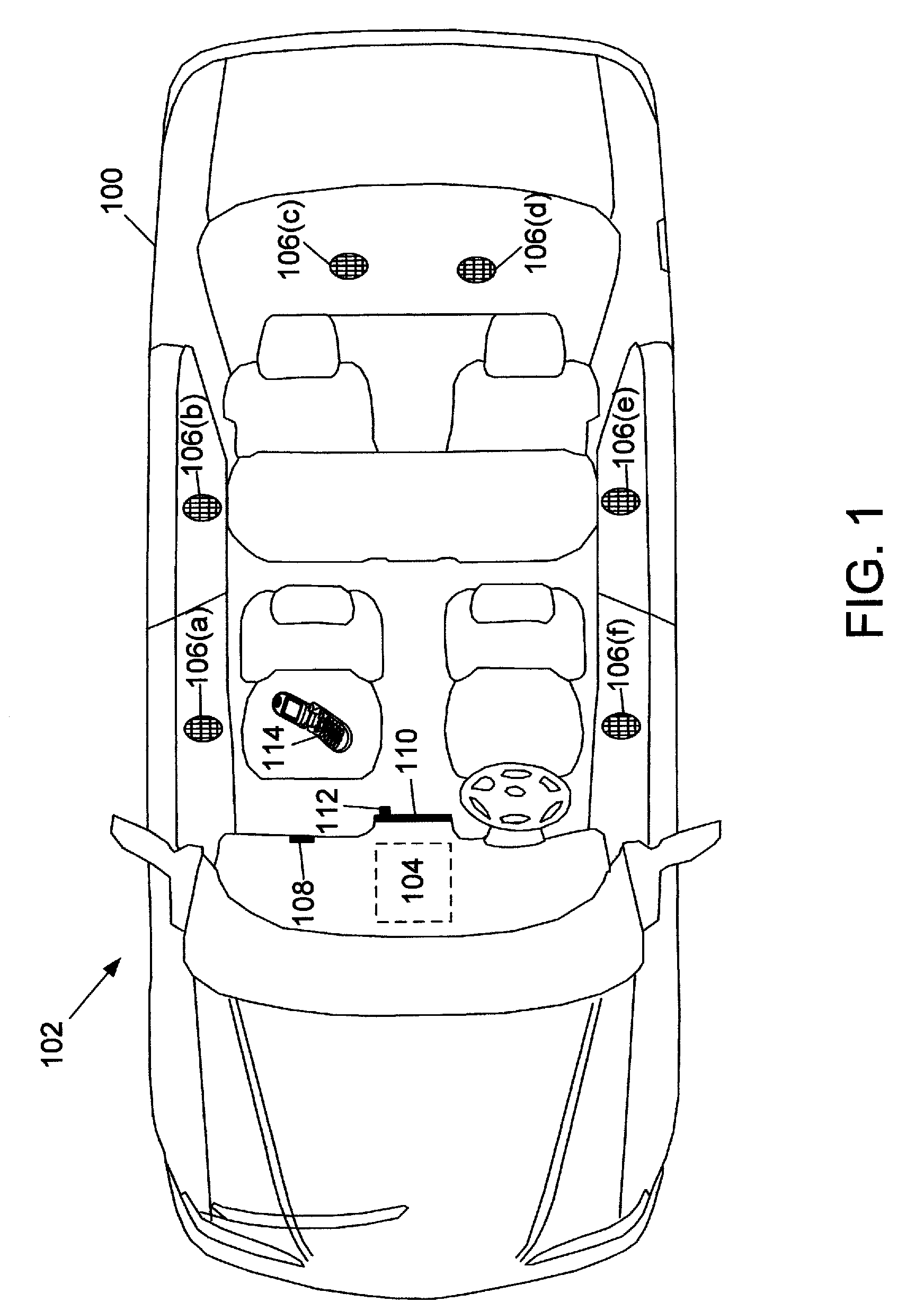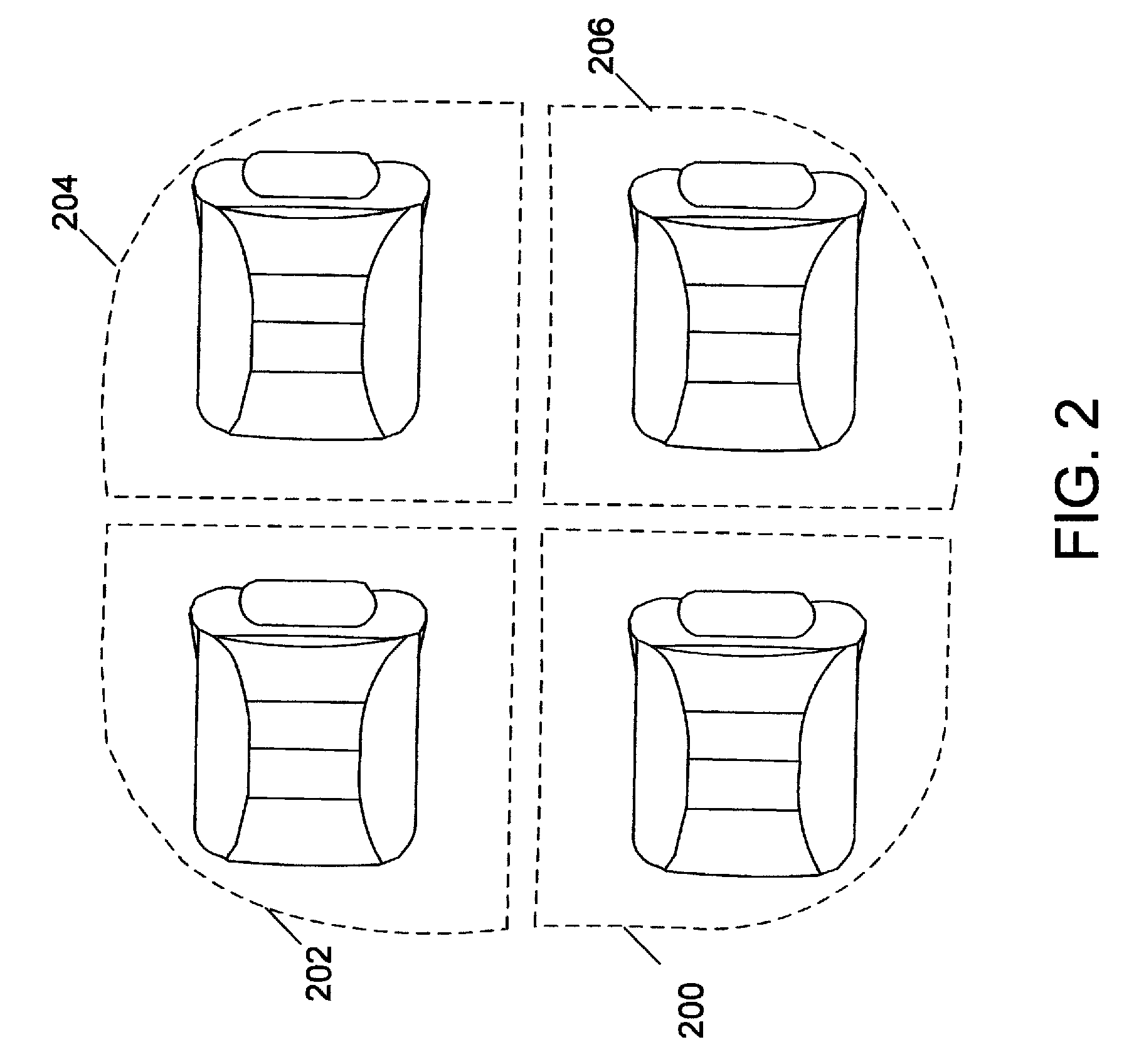Masking Based Gain Control
a gain control and masking technology, applied in the field of signal processing, can solve the problems of degrading the perception of the played back selection and the passenger's disagreeable listening experience, and achieve the effect of reducing the audibility of the second signal
- Summary
- Abstract
- Description
- Claims
- Application Information
AI Technical Summary
Benefits of technology
Problems solved by technology
Method used
Image
Examples
Embodiment Construction
[0023]Referring to FIG. 1, an automobile 100 includes an audio reproduction system 102 capable of reducing interference from acoustically isolated zones. Such zones allow passengers of the automobile 100 to individually select different audio content for playback without disturbing or being disturbed by playback in other zones. However, spillover of acoustic signals may occur and interfere with playback. By reducing the spillover, the system 102 improves audio reproduction along with reducing disturbances. While the system 102 is illustrated as being implemented in the automobile 100, similar systems may be implemented in other types of vehicles (e.g., airplanes, buses, etc.) and / or environments (e.g., residences, business offices, restaurants, sporting arenas, etc.) in which multiple people may desire to individually select and listen to similar or different audio content. Along with accounting for audio content spillover from other isolated zones, the audio reproduction system 102...
PUM
 Login to View More
Login to View More Abstract
Description
Claims
Application Information
 Login to View More
Login to View More - R&D
- Intellectual Property
- Life Sciences
- Materials
- Tech Scout
- Unparalleled Data Quality
- Higher Quality Content
- 60% Fewer Hallucinations
Browse by: Latest US Patents, China's latest patents, Technical Efficacy Thesaurus, Application Domain, Technology Topic, Popular Technical Reports.
© 2025 PatSnap. All rights reserved.Legal|Privacy policy|Modern Slavery Act Transparency Statement|Sitemap|About US| Contact US: help@patsnap.com



